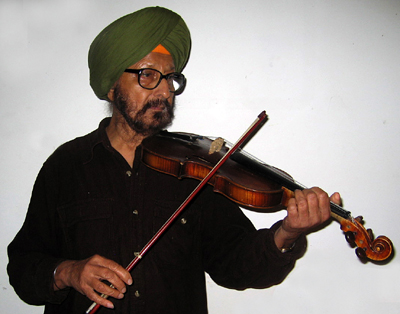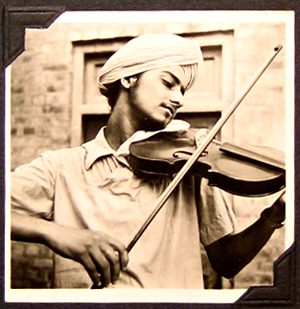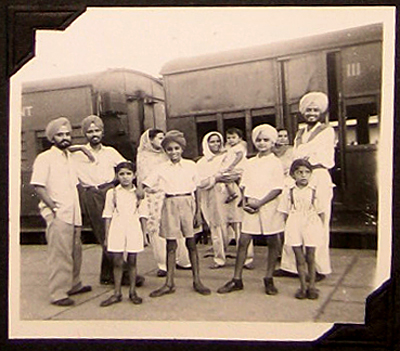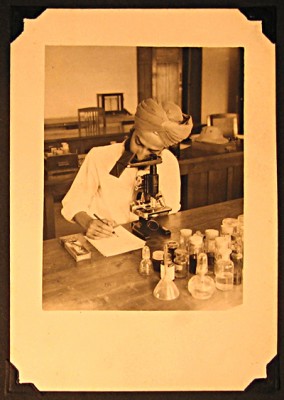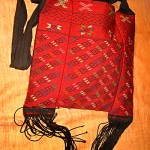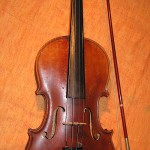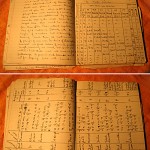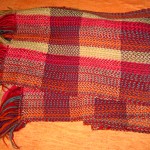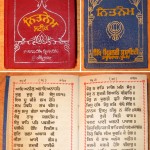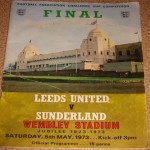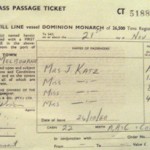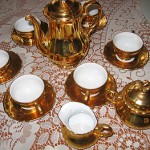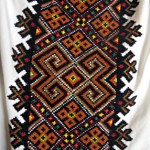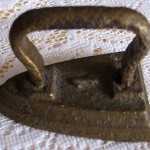Sikh/Punjabi/Indian
Rangoon, Burma (now Yangon, Myanmar) and Tarn Taran, Punjab, India nr Amritsar
Bombay (now Mumbai), India in June 1954
Sydney on 23 June 1954
Oriental Hotel, Cremorne, Sydney organised by University of Sydney
Gardener at the Indian Consulate, Sydney
Dishwashing at Indian restaurant in Kings Cross; lab maintenance at Sydney University; cytogeneticist at Sydney Hospital; sarod performer
I was born in the suburb Babu Mohalla in a city called Quetta which is now in western Pakistan. Babu Mohalla was named after my maternal grandfather. My mother’s family was living there before the partition of India in 1947. My father was living in Rangoon [in Burma], now called Yangon.
My first few years was in Rangoon. My father was a medical practitioner there. In my time, Rangoon was a very cosmopolitan city and there were a lot of Sikhs. The surroundings no doubt was Burmese, but my environment at home was where I learn my language and Sikh customs. My mother used to teach me kirtan – Punjabi hymn singing in Sikh temples – which keeps us in connection with our scriptures.
We grew up in four languages. The business language was Indian Hindustani, which is like Urdu and Hindi put together. In the schools we learnt English and how to read and write Burmese, although it wasn’t a spoken language. There was Punjabi [because of] the family. These four cultures were part of my life.
This shoulder bag is the only item I have from Burma and I’ve had it since my primary school days. It’s very typical of Burmese embroidery in Shan state. I brought it with me [to Australia] but it’s so long ago but I don’t even remember why I did. But now, of course, it’s become very important. It brings back memories in Burma. I was hurt when we heard a lot of suffering came to people [there]. I haven’t forgotten Burma.
World War [Two] came in, so we had to evacuate Rangoon. Our family decided to come back to the Punjab [region of] India. Fortunately we had a house in a town called Tarn Taran and my father was a medical doctor for the British army in the 7th Gurkha regiment in Palampur, which is now in the state of Himachal Pradesh.
While he was there, I spent my high school years boarding in Christian education. Our teachers told us that God has given every person a talent. I discovered I had a talent of music. It so happened my music playing started in Rangoon, about five years old. My uncle happened to buy a flute. I knew where he kept it, so while he was away I started blowing into it. One day I discovered I could get a sound out of it. When I got the sound, I put my fingers on and discovered I could play simple tunes on it which was absolutely amazing.

Sardool playing his uncle’s flute, Tarn Taran, Punjab, India, c. late-1940s“Our teachers told us that God has given every person a talent. I discovered I had a talent of music. My music playing started in Rangoon, about five years old, [when] my uncle happened to buy a flute.”
This was the sort of talent I discovered later I should improve on as my interest [became] the classical music of India. My uncle had bought a violin and was learning from a teacher and I became [keen] to play. This violin was given to me by my father when I was 15. I was playing concerts in Amritsar, about 15 kilometres from Tarn Taran. We don’t play the violin like it’s played in the West – it’s an Indianised version of playing.
Sardool playing his violin, Tarn Taran, Punjab, India, c. late-1940s
“This violin was given to me by my father when I was 15. We don’t play the violin like it’s played in the West – it’s an Indianised [style].”
I was 15 and the partition of India came. It was a blow to us because the whole Punjab, which we were so proud of, [had] Muslims, Christians, Hindus living happily together. Five rivers flowed through Punjab, the most fertile place in India, producing wheat, was going to be divided. My mother’s family had to migrate. When they came into India, very hard to find jobs. We went through a lot of difficult[y]. This concept of partition was very, very hard to take.
During partition, for one year, there were no schools. That year I spent with a very good sitar player in Tarn Taran. He was very kind to give me lessons at that age with [little] classical music background. I was only playing violin at that time. It’s very difficult to understand what is Indian classical music, but he made me realise it is a slow process.
I was trying to read the theory of Indian music. The theoretical aspects was beyond me so I thought the best thing would be to copy it. So I did, word for word and page by page. And it’s in English! It’s a funny situation because of the English dominance in India. When I was at school writing letters to my father, we communicated in English. Even now, to get a good job in India you have to know English, like the English and all the English manners, learning the English songs.
The book took many months to copy. The date [is] 8th of August 1949 and if you go to the end, it’s in December. They’re all sargams 1 of the tunes. It’s amazing, that book.
My music teacher was also a professor of Zoology. I spent one year in the college in Amritsar after high school and got interested in biology. Then I had to face the tragic death of my father. My uncle was very kind and sent me overseas to continue my studies.
[One of] the authors of our college textbook was from the University of Sydney; I thought they must have a big department. Sydney University at that time was not [well] known [in India]. We had little knowledge of Australia and when people were thinking of going overseas, they thought of England or America. I wrote to the Australian High Commissioner to find out if the degree and university would be recognised by the Indians.
I had the idea to do my degree [and] go back. You see, for a young Indian, if somebody gets this opportunity, they don’t want to miss that. To go overseas was a thrill! I was very enthusiastic because I was building my career. Our family was used to going [elsewhere], like my father, my grandfather had moved to Burma. So I was very pleased and applied to the University of Sydney to commence my Masters of Science in the Zoology department.
Visa was not hard. I got visa for two years by the Immigration Department here. When I got the university admission, they saw I was okay.
I had to be accompanied [to] Bombay, which is Mumbai now, by another uncle of mine. This is the picture of us boarding train in Amritsar. We had some friends in Bombay and stayed there.
Family farewell Sardool as he begins his journey to Australia, Amritsar station, Punjab, India, June 1954 (Sardool is standing, first on right. His mother is in the middle, holding a child.)
“And see, this is picture of me leaving, boarding train. I had to be accompanied [to] Bombay by my uncle.”
I came on a boat, the SS Strathmore in June ‘54, from Bombay. It was coming from England so there were a lot of English migrants. They were on assisted passages.
There was supposed to be two people in my cabin and the second person never came, so I was by myself which was great! But the seasickness did affect me for a while because I loved eating the Goanese curries. A lot of the stewards were from Goa apparently. They’re good sailors I’m told.
I had good company on the boat. There’s a young Australian who’d been to India to learn yoga. I was amazed that people come to India to learn yoga. Here I am going to Australia, and this Australian has come back. He’s still my friend, I see him.
We stopped in Ceylon, now Sri Lanka. The first port of call [in Australia] was Fremantle, which was very impressive to me. Being an academic person, I used to visit the universities, so my first memory of Perth was the Professor of Zoology at the University of Western Australia. The other port of call was Adelaide so I did the same thing [with] the University of Adelaide.
When I got in Sydney I was met with a young academic from the University of Sydney. It was tremendous to know he was coming. There was a letter from Professor Murray of how to visit him at the university from my accommodation in Cremorne [on Sydney’s lower north shore], the Oriental Hotel. It was all arranged by the university. The Immigration Department wanted you to book your accommodation before you entered Australia. The hotel was run by Dutch people. But what was interesting was that I had to get a ferry to Circular Quay and then a tram to the University of Sydney.
I wasn’t sure what the climate was like here and had lots of warm clothes! That’s a little muffler which goes around your neck, nice and warm. It’s a good memory of my father because it was made [by] one of his Gurkha patients when he was stationed in Palampur. They were teaching soldiers how to knit. I brought it with me and it’s been with me ever since.
I couldn’t see any Indians, they were all Australians. I was getting all these funny looks because they’d never seen a Sikh I suppose – I always wore a turban and a beard. Every time I looked up there was somebody looking at you. That used to make me very nervous initially. At that age you’re very aware of yourself.
The first thing strangers would ask was, “When are you going back?” Gradually I discovered that only white people were allowed to stay and there was such a thing as a ‘White Australia’ policy. I went through this feeling that I wish I had known I was going to a country where there was discrimination. Maybe I would have changed my mind? But it was only short-lived. When you are in the university you are in a different atmosphere. There was nobody staring at me and I made some lovely friends.
Early on, to be frank, I was never able to eat Australian food [except] fish and chips. They used to fill me up very nicely. When thinking of it, my mouth waters again! Gradually I got used to having T-bone steak and chops and boiled potatoes and carrots and loved it.
A couple of months [later] I moved on to Kings Cross because it was more cosmopolitan. I could get all different types of food I wanted, the Chinese food or my favourite was the Hungarian goulash because, somehow, it was very close to Indian cuisine to me at that time. My landlady taught me how to cook Australian food, it was so simple. Later on I learned to cook Indian food as it came [available].
I was able to speak English and I knew [the] Aussie [way]; I could eat with knife and fork and everything. But when I spoke to people, they would look at me very blank. These people [tried to communicate with] me in sign language, with fingers. That really hurt me initially. It used to upset me.
People ask me, “Why do you wear a turban?” That made me think a little bit. I said I was a Sikh and their question was, “Who started Sikh? When was he born?” I never paid any attention to Sikhism apart from little bits I learned from my mother. I brought these Sikh prayer books with me, my mother gave me. We call them Gutka. It’s very difficult to memorise all these prayers by heart. They’re extracts from the Guru Granth2 [but] I had no idea when Guru Nanak [was born] and what [Sikhism] was.
So that made me look into myself. If I am a Sikh, who am I? Now a lot of Sikhs have come as migrants, but in my time the only Sikhs I saw were students like me, or one or two from the Indian Embassy. The only thing I could do was to go to the public library. They had every up-to-date book on Sikh religion. Of course I missed home [but] I’m very grateful to Australia because it brought out my real Sikh identity and how I wanted to live, very freely, as a practising Sikh.
From Kings Cross I had moved to Annandale [in the inner west] because it was closer to the University of Sydney. I could walk and it was convenient. Then I lived in Paddington [in Sydney’s inner east] because I was able to absorb the Australian arts community at that time. I was playing music; they could identify my creativity with theirs. It was a tremendous experience living there.
My first sarod teacher came [in the] late ‘60s to give concerts. My other contact with Indian music was through the radio. I used to sit and practice and listen. Now I don’t play violin; yes, that’s the first and last one! I’m only teaching; I can tell them how it’s done. I have nothing against violin. It’s just that when I heard the sarod, I thought that’s the one I want. The sarod is a combination of three instruments: the fingerboard is played like an enlarged violin; it’s a banjo on one side because it’s got a distinct bridge on top of a stretched skin; it has sympathetic strings which when you tune up sound like harp. It’s an orchestra in itself, you know.
It took me a while to complete my masters course so I had to get a visa extension. The course was very hard but I passed the second time and wrote a thesis.
Sardool studying for his Masters degree, Zoology Department laboratory, University of Sydney, Australia, c. mid-1950s
“I had the idea to do my degree [and] go back. You see, for a young Indian, if somebody gets this opportunity, they don’t want to miss that. To go overseas was a thrill!”
Indian universities [encouraged] me to do a PhD to get a good job when I return [and] I was given a job in cervical cancer in the University of Sydney. I discovered there was good prospects of research here because they had the equipment.
My PhD was anthropological-orientated population genetics at the University of New South Wales. Later on, I realise it might be good to stay and started to like this country. Professor Walsh said he could arrange interview with Immigration. A lot of people think I married my future wife and stayed here but actually it’s not true. My immigrations were settled first, I didn’t want any Australian girl to think that I am marrying her to stay here.
My main idea was to carry on working in human genetics. I got a job as a cytogeneticist which is chromosome [research] in the field of leukaemia in the Kanematsu Research Institute in Sydney Hospital, when [it] was in Macquarie Street, affiliated with Sydney University. It was very well known for its research and produced two Nobel laureates.
I stayed for more than 25 years. I loved the work. We were given a salary and sometimes we had to work overtime without pay [but] it was a great satisfaction for the benefit of humanity.
I first visited India after eight years here. As I was working, I was able to afford to take my children to India and go more frequently. I am not a full-time worker anymore [but] I still go. My family always meet us with very warm welcome. We’re still the same.
Now [Australia] has more understanding. A lot of Australians have gone to India and have knowledge about Sikhism, Hinduism, the Indian history. The Indian food, it’s more. People say the world is coming closer. You start off in the morning here on a plane and then in the evening I’m in Amritsar, the same day. Initially it took me three weeks on a boat to come to Sydney and now it’s just a matter of a few hours you can be overseas.
Now that I’ve retired, I am concentrating to acquire more knowledge of Indian classical music, increase my vocabulary and perform the sarod. It’s a creative art, you know. It’s never ending. You want to learn more and more, there’s always plenty to practice.
I knew this was a slow process and I kept practising whatever I knew. After practising for 10 years I was able to play. And now, 30 years, 40 years, I’m playing better every time. My handwritten Indian theory notes has become my reference book. I have to consult it ‘cause we don’t have many teachers here. This book has been really very, very helpful.
Footnotes:
[1] Sargams are Indian musical scales.
[2] The Guru Granth Sahib is the Sikh holy book.
Interview by:
Andrea Fernandes, NSW Migration Heritage Centre
4 June 2008
Sardool Singh was originally interviewed by Vandana Ram and filmed by Mike Jones, Soundhouse VectorLab, Powerhouse Museum. View this mini-documentary on the Packing to Leave: Saris, Suits and Spices – Migration Stories from South Asia to Sydney online exhibition and hear Sardool’s music.


